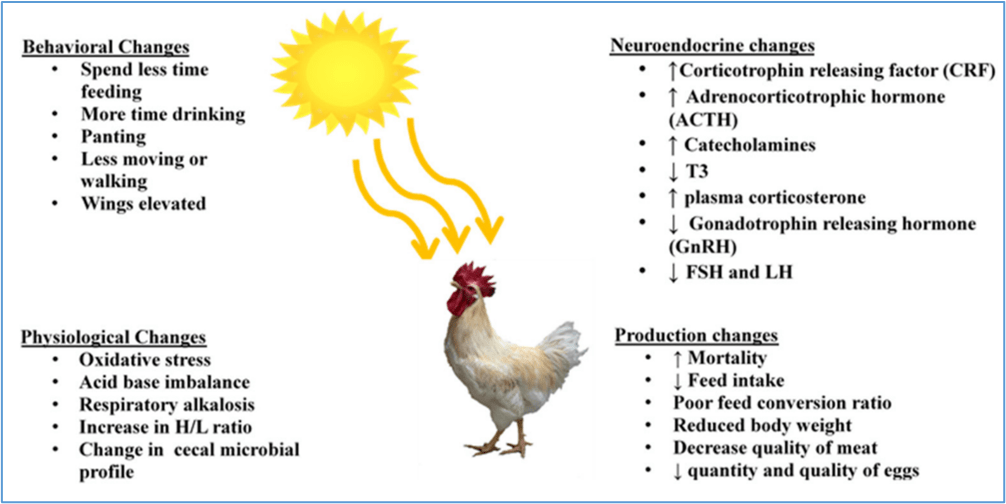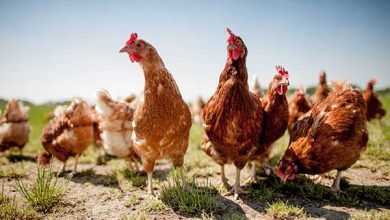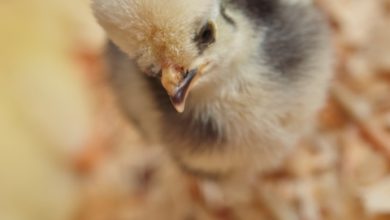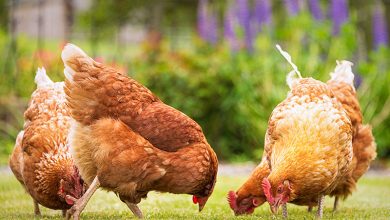Beware of Summer Stress and Disease outbreaks in Poultry Production
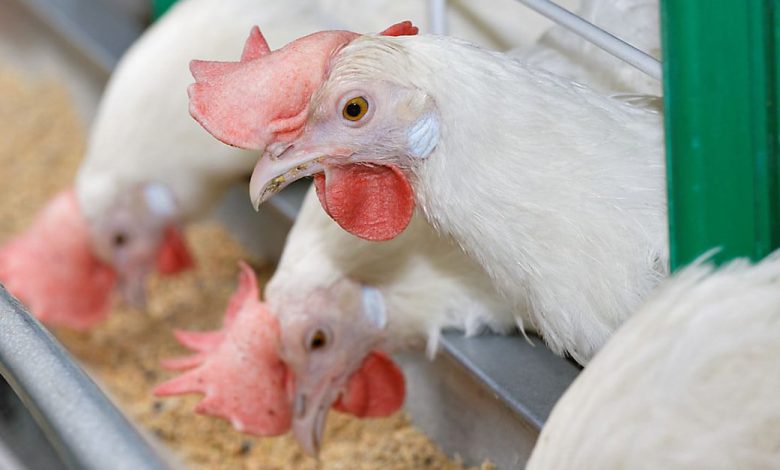
Beware of Summer Stress and Disease outbreaks in Poultry Production
Dr.R.N.Sreenivas Gowda
There is forecast on the warmer than average this year due to weather phenomenon and global warming. Even temperature of North India was more than average in February month itself indicates that there will be more summer heat than the normal. Therefore, the prediction is likely increase in average temperature than the normal. In this summer season, as the temperature increases, poultry suffers from the condition called heat stress, also known as summer stress. This is a condition is due to imbalance between heat generation and heat loss in the body. This condition not only brings poor performance in birds but is also responsible for huge economic losses in terms of poor growth, lowered production, and higher mortality. The poultry farmers have to take all the precautionary measures to handle the heat problem to save the birds from heat catastrophe.
What is heat stress?
When the Birds are ‘heat stressed’ they have difficulty in achieving a balance between body heat production and body heat loss. This can occur at all ages and in all types of poultry. Poultry is most comfortable in an environmental temperature around 22-28°C (known as their thermoneutral zone). In other words, Heat stress is the result of unsuccessful thermoregulation in the animals, as they absorb or produce a higher quantity of heat than they can lose. Exposure of birds to high environmental temperature generates behavioral, physiological and immunological responses, which impose detrimental consequences to their productivity (fig1).
Why the poultry are more prone to heat stress?
The poultry birds are susceptible to high environmental temperature due to their physiological buildup such as absence of sweat glands making it impossible for them to dissipate heat, their full body of feathers, their higher body temperature, and the fatty nature of the birds. The heat or summer stress not only brings lowered performance in poultry but also leads to immunosuppression issues, which can result in disease outbreaks and cause heavy mortality. In this, males are found to be more prone to heat stress than females. Therefore, breeders have to take extra care in summer to prevent fertility problems in breeder males.
What are the contributory Factors of Heat stress?
Environmental factors such as sunlight, thermal irradiation, air temperature, humidity, When the environmental temperature is above the thermoneutral zone, the animals activate thermoregulation mechanisms to lose heat through behavioral, biochemical, and physiological changes and responses.
- At temperature above 35o C bird is likely to experience heat stress as having a high body temperature of 41°C and absence of sweat glands makes it difficult for them to dissipate their heat to surrounding.
- Stocking density, more birds in the shed increase heat and humidity.
- Bird related factors such as body weight, feather coverage and distribution, dehydration status, metabolic rate, and thermoregulatory mechanisms.
- Heat stress can be classified into two main categories, acute and chronic. Acute heat stress refers to a short and fast increase in environmental temperature (a few hours), whereas under chronic heat stress the high temperatures persist for more extended periods (several days), the former acute condition there will be more mortality.
What are the signs of heat stress in poultry?
- Spreading the wings away from the body.
- Increased respiratory rate.
- Squatting/low to ground.
- Reduced feeding.
- Increased drinking/resting.
- Cause pale wattles and comb,
- Lethargy, limp, unsteady gait, or unconscious.
- Heat stress causes acid-base disequilibrium, or the inability to cool the body to maintain normal body temperature.
Behavioural, neuroendocrinal, and physiological changes are observed in birds during heat stress. Behavioural changes can include decreased feed intake, increased water intake, panting, less walking, and elevated wings. Physiological changes include oxidative stress, acid-base imbalance, and respiratory alkalosis. Internally the bird may experience decreased protein digestion and absorption, increased metabolic disorders, Increased chances of disease prevalence, and fertility issues. Production challenges can include reduced feed intake, poor feed conversion ratio, reduced body weight, impaired meat, and egg quality, and, increased mortality (fig, 1)
Fig :1. Impact of heat stress during summer
(Source: Journal of Applied Animal Ethics Research2020)
Effect of heat on food safety
There is an increasing evidence to demonstrate that heat stress can have a significant deleterious effect on food safety through a variety of potential mechanisms.
- The negative effects of heat stress on broilers and laying hens range from reduced growth and egg production to decreased poultry and egg quality and safety.
- Chronic heat exposure negatively affects fat deposition and meat quality in broilers.
- Productivity of laying hens flocks also be affected by a multitude of factors, which is probably one of the most commonly occurring challenges in many production systems.
- Decreased feed intake is very likely the starting point of most detrimental effects of heat stress on production, leading to decreased body weight, feed efficiency, egg production and quality.
- Heat stress leads to reduced dietary digestibility, and decreased plasma protein and calcium levels.
- Heat stress during the growth period of broilers has been associated with undesirable meat characteristics and quality loss.
- Transportation of broilers from farms to processing facilities under high temperature conditions have also been shown to cause meat quality losses.
- In laying hens, heat stress has been shown to negatively affect egg production and quality.
- During heat stress, foodborne pathogens, such as Salmonellaand Campylobacter colonize and disseminate along the human food chain causing a major public health and economic concern in poultry and egg production.
Why disease incidence is more in summer?
- Alters antibody and cell-mediated immune responses, thereby immunosuppressing effect and increasing susceptibility to pathogens.
- Vaccine failures are common in summer seson.
- Summer stress also results in immuno-deficiency and disease outbreaks in poultry.
- Heat stress in summer leads to reduced feed consumption, lower body weight gain, high feed conversion ratio (FCR) and dehydration.
- It also causes a variety of changes in gastrointestinal tract including alteration of the protective microbiota as well as decreased integrity of the intestinal epithelium increasing enteric infections such as Necrotic Enteritis.
- An increase in energy demands, increased culls and high mortality are observed due to heat stress.
What are the common poultry diseases during summer?
The most common infections occur are from Bacterial, Viral, Fungal and Parasitic are shown in the below table 1. Newcastle and bronchitis vaccine reactions can occur in birds hyperventilating because of heat stress. Vaccination failure is mainly because of Stress like extreme temperature or relative humidity causing immunosuppression.
Summer favours increase in vector population such as flies, beetles and mosquitos and these act either as intermediate hosts or carriers of infectious agents including Newcastle disease and Avian Influenza. House flies are considered intermediate hosts for tapeworms and may transmit ascarids to caged birds. Flies mechanically carry ascarid and other nematode eggs on their feet from manure to pens, feed, and water and rats in the shed transmits salmonella and tapeworms.
Table1. Occurrence of diseases in summer
| Sl no | Bacterial | Viral | Fungal | parasitic |
| 1 | Salmonella | Fowl Pox | Aspergillosis | Ascaridiasis |
| 2 | Mycoplasma-MG,MS | vvND | Candidiasis | Tapeworms |
| 3 | Colibacillosis | IB | ||
| 4 | Infectious Coryza | ILT | ||
| 5 | Pasteurellosis | HPAI | ||
| 6 | Campylobacter | IBD |
Disease monitoring in summer season
Accelerate monitoring of birds health with advanced diagnostic testing. Serum Antibody levels decrease during summer months. Evaluating antibody titres for various poultry pathogens, has become an important flock management tool for poultry. Determination of the presence, absence or level of specific antibodies to a disease entity may be determined through the use of certain serological tests eg ELISA tests, plate agglutination tests, haemagglutination tests and micro or tube agglutination tests. Consulting reputed serological labs is important to prevent any disease outbreak. Adopt prevention is better than cure policy.
Serological Monitoring required for the following infections
Broiler Breeders
Newcastle Disease (NDV), Infectious Bronchitis Virus (IBV),Infectious Bursal Disease (IBD),Avian encephalomyelitis (AE), Egg Drop Syndrome (EDS), Marek’s disease (MD), Chicken Anaemia Virus (CAV),Avian Influenza (AI) ,Avian Pneumovirus (APV), REO virus, Salmonella,and Mycoplasma gallinarum/synoviae (MG/MS).
Layers
Newcastle Disease (NDV),Infectious Bronchitis Virus (IBV), Avian encephalomyelitis (AE) ,Egg Drop Syndrome (EDS), Avian Influenza (AI) ,Salmonella, Mycoplasma gallinarum/synoviae (MG/MS).
Broilers
Newcastle Disease (NDV),Infectious Bronchitis Virus (IBV),Infectious Bursal Disease (IBD),Salmonella, Mycoplasma gallinarum/synoviae (MG/MS).
General management tips in poultry farming in summer:
The main concern is to Keep the birds cool: The following steps can help birds combat heat stress in summer months
- Housing management, 2)Water management, 3)Feed management and 4)General managemen

Fig:2. Combating Heat stress in poultry operations by Management and Nutrition practices.
House management consists of both inside shed management, and outside shed management.
Outside the shed:
- Provide 1meter overhang to cut the direct sun and rain into the house.
- Thatching of the roof with green grass or agricultural waste can help reduce shed temperature. Paddy straw can be used for this purpose.
- Whitewashing the roof with lime helps to reduce the temperature inside the shed.
- Applying sprinklers above the shed to cool the roof.
- The use of gunny bags on the side walls (grill) of the shed over which drip water is set.
- Allowing trees to grow near the shed to provide shade on the shed.
- Prohibit wild birds, which can carry diseases like Avian Influenza, from entering the shed.
- Provide ridge ventilation to help remove hot air from inside the shed.
Inside the shed
- Use cooler fans
- Use of a foggers
- Provide a continuous supply of cool water (if not possible, periodically flush the water to provide cooler water for birds)
- Reduce litter thickness (ideally around 400-450 grams per square foot)in deep litter rearing.
Water management
- Water management is crucial in heat stress management. In summer, water consumption goes up 3-4 times feed intake. So, a good quality water supply is essential.
- A water hygiene process must be followed because bad bacteria can prevail rapidly under poor conditions, which will lead to disease conditions.
- Water pipelines must be cleaned well and flushed with organic acids or hydrogen peroxide periodically. Treat water with a quality water acidifier and sanitizer. In general, try to make the water pH in acidic conditions.
- As feed intake is less during times of increased temperatures, nutritional water acidifiers should be used to help combat heat stress.
- Protect the storage water tank with wet gunnys or provide shade on the roof top.
- Research shows feed intake is reduced by 1.25% with every 1° rise in temperature. Further, it is observed that there is a decline in feed intake by almost 5% with every degree rise in temperature from 32-38° C. Knowing this it’s best practice to feed a good quality feed during times when heat stress can occur.
- Feeding should be done during the cooler hours of the morning or evening but too much gap in feeding time is not advisable.
- Increase the number of feeders and drinkers during feeding time to reduce competition among birds.
- Adding antioxidants is shown to be helpful to reduce stress and improve feed consumption while maintaining or improving body weight gain. (Vitamin E, Vitamin C, Selenium).
- A high-energy diet should be provided during summer because birds lose more energy while panting.
- Energy in feed should be supplemented with oil rather than grain because fat has the lowest heat increment value compared to carbohydrates and protein.
- Feed consumption is reduced in summer. To overcome nutritional and productive losses it is suggested to supplement the diet with 10-15% more amino acids, vitamins, and minerals rather than increasing the protein level directly.
- Increase calcium and phosphorus levels to overcome thin eggshells more often seen during summer due to respiratory alkalosis (more carbon dioxide is lost due to panting).
- Instances of viral challenges increase during this time as immunosuppression is common. Fumaric acid is shown to have good antiviral properties and can help to reduce viral challenges. A combination of coated benzoic acid and fumaric acid may be used as an acidifier.
- Chelated trace minerals, a supplement of organic trace minerals zinc, copper, or manganese, and methionine source.
- Essential oils have a broad range of action from being immunomodulators to performance enhancers. Adding essential oils – especially thymol and carvacrol – to the diet can help mitigate summer stress challenges and improve meat yield and overall performance.
- Use of MOS and B- Glucans during heat stress conditions is convincing due to the possibility to reverse or compensate physiological alterations induced by heat stress and by restoring immune function and promoting robust inflammatory responses.
- The addition of ammonium chloride, potassium chloride, and/or sodium bicarbonate has shown improved performance in broilers by improving water quality and feed intake.
- Probiotics can be used to help control the corticosterone level and the excessive release of pro-inflammatory agents. Lactobacillus-based probiotics enhance goblet cell count in the duodenum and jejunum of heat-stressed broilers thereby improving the feed conversion ratio.
- Since a hot humid climate favors the growth of mould/fungi in feed the consistent use of an antifungal is recommended.
Conclusion
Heat stress is one of the most important environmental stressors challenging poultry production worldwide. There is more heat experienced in recent years due to climate change and global warming. The negative effects of heat stress on breeders, broilers and laying hens range from reduced growth and egg production to decreased poultry and egg quality and safety. However, a major concern should be the negative impact of heat stress on poultry welfare. Institution of precautionary measures to keep cool in the summer months is inevitable. Adoption of all measures are required to save the birds is essential. Keep monitoring on the antibody levels and follow suitable remedies by boosting the levels with revaccination and proper treatment to save them from heavy mortality.
